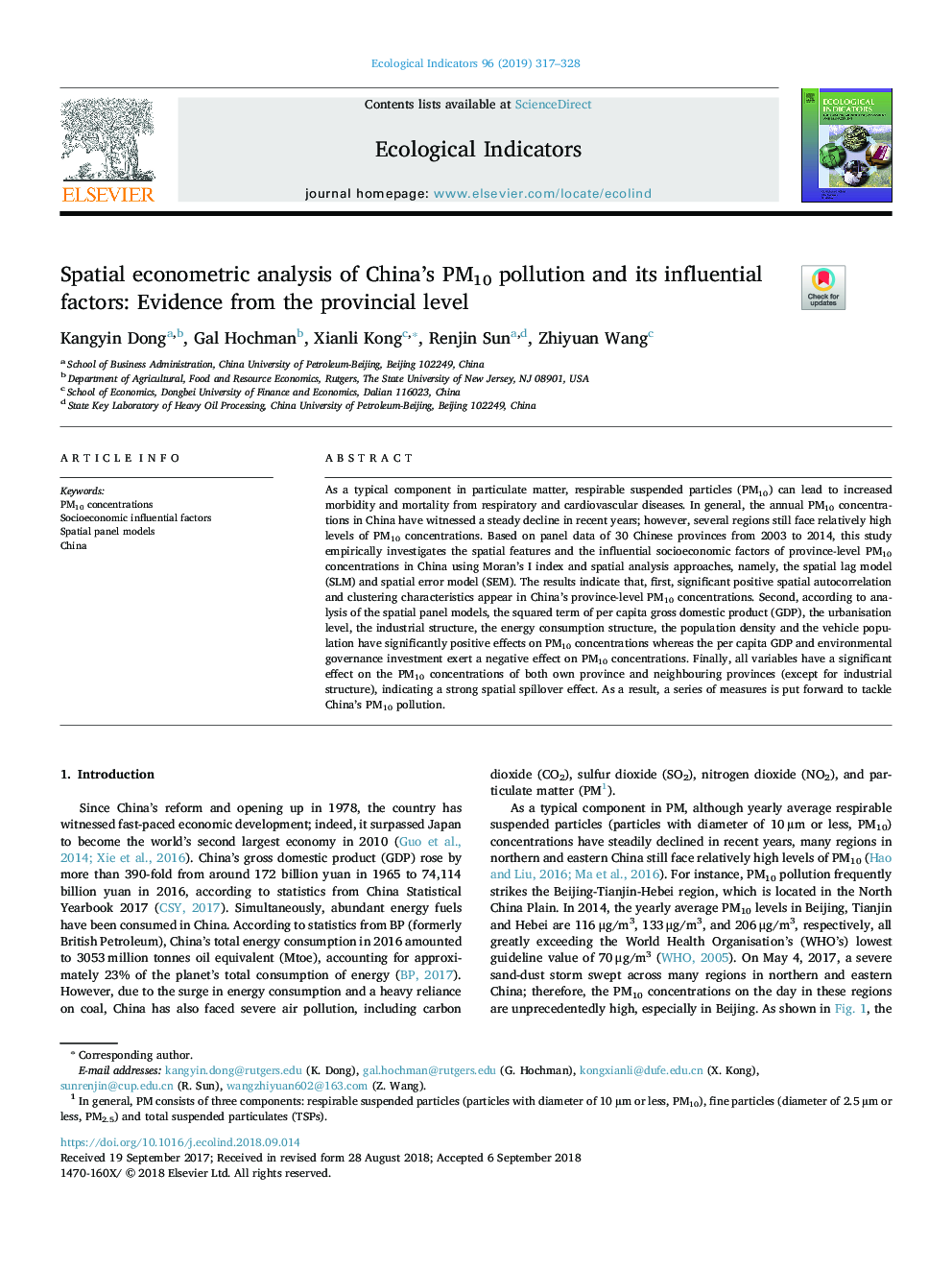| Article ID | Journal | Published Year | Pages | File Type |
|---|---|---|---|---|
| 10144245 | Ecological Indicators | 2019 | 12 Pages |
Abstract
As a typical component in particulate matter, respirable suspended particles (PM10) can lead to increased morbidity and mortality from respiratory and cardiovascular diseases. In general, the annual PM10 concentrations in China have witnessed a steady decline in recent years; however, several regions still face relatively high levels of PM10 concentrations. Based on panel data of 30 Chinese provinces from 2003 to 2014, this study empirically investigates the spatial features and the influential socioeconomic factors of province-level PM10 concentrations in China using Moran's I index and spatial analysis approaches, namely, the spatial lag model (SLM) and spatial error model (SEM). The results indicate that, first, significant positive spatial autocorrelation and clustering characteristics appear in China's province-level PM10 concentrations. Second, according to analysis of the spatial panel models, the squared term of per capita gross domestic product (GDP), the urbanisation level, the industrial structure, the energy consumption structure, the population density and the vehicle population have significantly positive effects on PM10 concentrations whereas the per capita GDP and environmental governance investment exert a negative effect on PM10 concentrations. Finally, all variables have a significant effect on the PM10 concentrations of both own province and neighbouring provinces (except for industrial structure), indicating a strong spatial spillover effect. As a result, a series of measures is put forward to tackle China's PM10 pollution.
Related Topics
Life Sciences
Agricultural and Biological Sciences
Ecology, Evolution, Behavior and Systematics
Authors
Kangyin Dong, Gal Hochman, Xianli Kong, Renjin Sun, Zhiyuan Wang,
